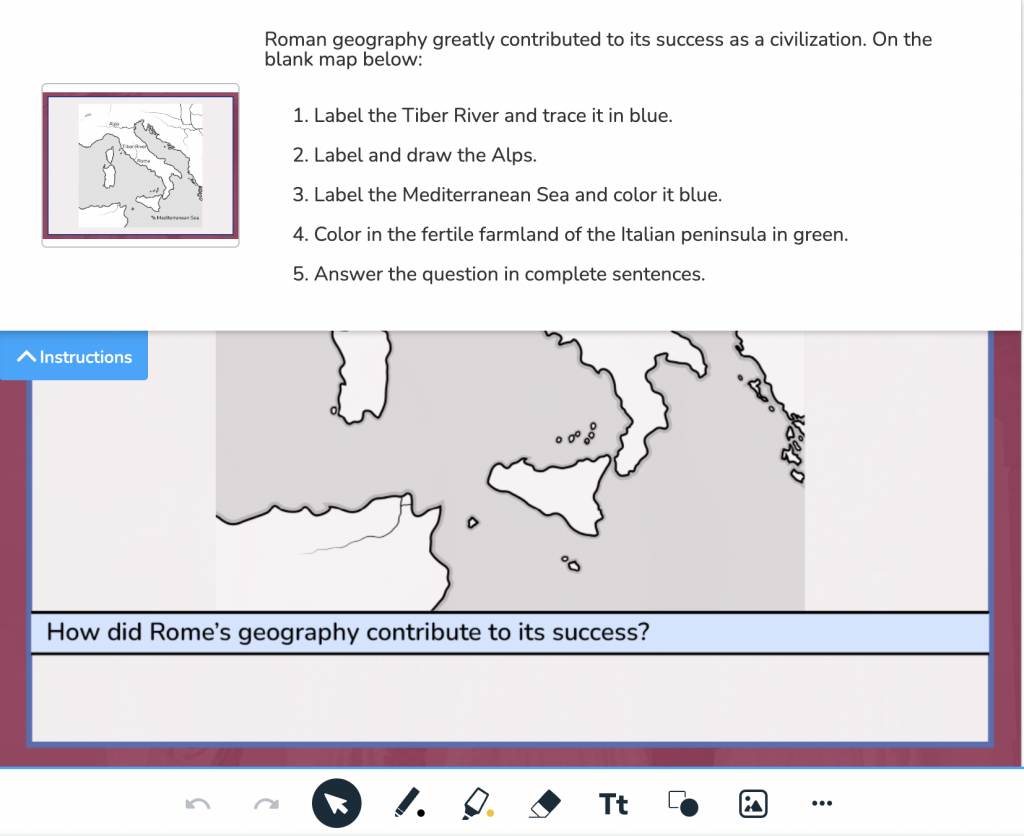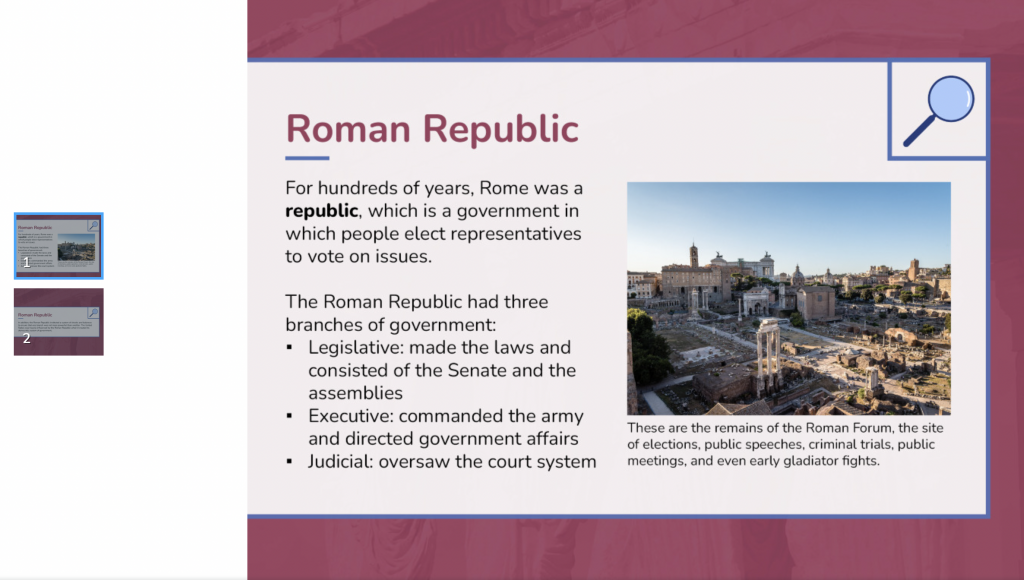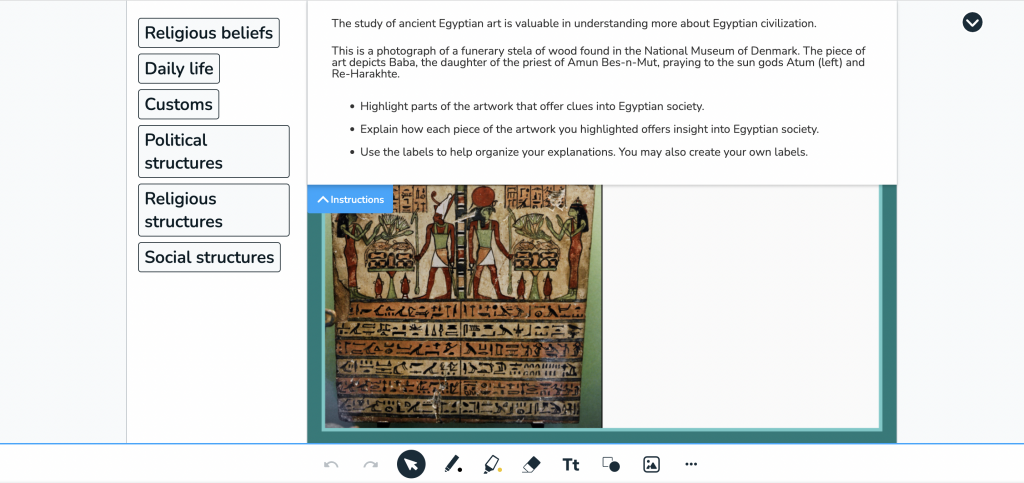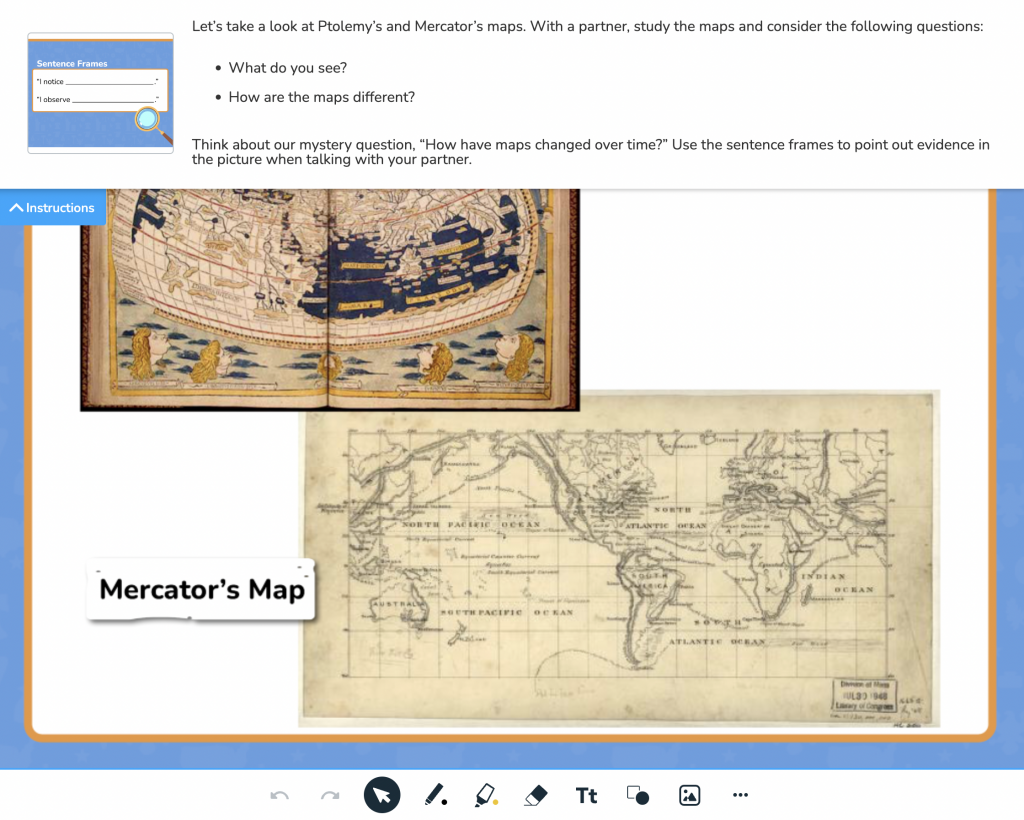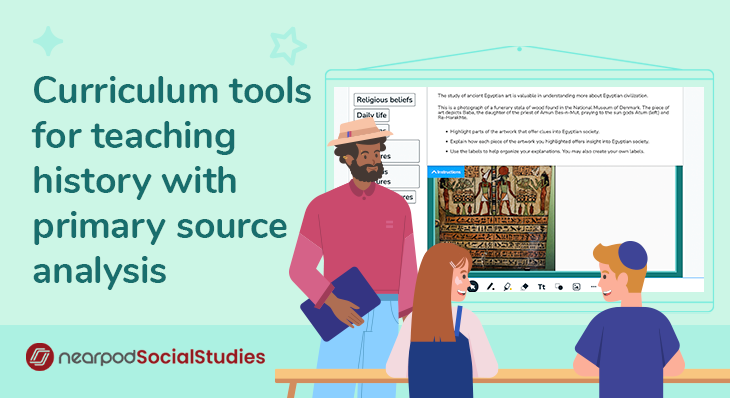
Curriculum tools for teaching history with primary source analysis
There is an old adage that “history repeats itself.” Yet, we now live in an age where we have a host of information at our fingertips at any given second of any given day so that we can learn from lessons of the past. While this onslaught of information can be overwhelming, it is also exciting, as the access to content – stories, data, and history – has few obstacles. However, we all need to hone our critical thinking skills when it comes to consuming such content; this is why critical thinking is the focus of digital literacy in schools today. And one way to dive into history is to lean on primary sources through primary source analysis.
What are primary sources?
Primary sources are documented evidence of our past, serving as clues from our history. These types of sources and artifacts include items such as letters, diaries, and newspaper articles that provide firsthand accounts of events or periods in time. Primary sources showcase diverse perspectives across the ages, helping to illustrate the human experience. Primary source analysis helps us broaden what we consider history by understanding past contributions and providing additional context. Students, researchers, scholars, and enthusiasts have long relied on primary sources to round out a more comprehensive understanding of what happened in the past.
What is the value of teaching with primary source analysis?
To be agents of change in the classroom, we must foster a culture that encourages our students to stay well informed and continually engage in questioning and reflection to develop their critical thinking abilities. Primary sources represent diverse and often marginalized voices that tend to be forgotten. Such sources are representations of ourselves and others. They challenge our own point of view and encourage us all to grapple with contrary viewpoints. They represent the complexities and dynamic nature of our societies and cultures, and many claim that interpreting primary sources supports a fair and equitable democracy. History primary source analysis can reflect roots and values, changes in ideology, and shifts in common culture.
Examples of primary source analysis in history instruction
Nowadays, it is easier than ever to access primary sources and analyze such assets and artifacts. No longer are we limited by geography or even the fragility of documents. As educators, we can help our students understand the value of primary sources to help them cross-reference their research when learning about the past. Students today can engage in examples of primary sources by practicing how to sift through digital archives when they are looking for a variety of resources.
Examples of primary sources include:
- Photographs
- Newspaper articles
- Books
- Letters
- Survey data
- Census
- Diaries
- Songs
- Interviews
- Oral histories
- Treaties
- Household items
- Speeches
- Posters
- Cartoons
- TV shows
- Radio broadcasts
- Brochures
- Reports
- Court documents
- Polls
- Memories
- Auto biographies
- Sound recordings
- Video recordings
Nearpod Social Studies Curriculum
Nearpod offers a supplemental social studies curriculum teachers use in conjunction with their current programming for a more immersive social studies experience. Social studies teachers use Nearpod as a tool for students to analyze primary sources across a wide range of lessons covering 18 subjects. Each lesson applies dynamic media features to primary sources, enabling students to explore and evaluate perspectives in a hands-on manner. Through a hands-on, guided inquiry model, students annotate primary sources using Nearpod’s Draw It feature and gather real-world content through virtual reality with VR Field Trips – all while benefiting from collaborative discussions around lessons created by Nearpod, iCivics, and the Smithsonian. Plus, Nearpod Social Studies can qualify for Federal Title I and IV funds to support social studies initiatives.
New to Nearpod? Get started with a free Nearpod account to witness the impact Nearpod can make with your students. If you’re an administrator looking to further support social studies teachers, schedule a call with us to explore Nearpod Social Studies.
3 Essential strategies for teaching history with a primary source analysis tool
1. Site the difference
One of the first skills for students to learn is how to differentiate between primary and secondary sources. Working with primary sources provides firsthand accounts via original thinking or reporting. Secondary sources, on the other hand, provide second-hand information or accounts. Often, they are summaries of sorts. Tertiary sources are what students often interact with the most – these are textbooks or encyclopedias, which are a summary of primary and secondary sources or a curation of accounts. Helping students determine and identify whether a source is primary, secondary, or tertiary is key to their evaluating the credibility and validity of a source. It may sound simple, but your educators should have students constantly asking themselves: Does this author have first-hand knowledge of this subject or event?
The Nearpod Social Studies program includes lessons to support this strategy. For example, in Nearpod’s Ancient Rome lesson, students learn about the key figures, innovations, and the rise and fall of the Roman Empire. It explores primary sources, such as historical sites from a first-person point of view through an immersive VR experience, and has students complete activities, such as map annotations, Draw It assessments, and more.
2. Be a detective
From an early age, we need to teach our students how to read and consume information through a critical lens. They need to be detectives and form habits of mind to always ask a lot of questions about a source, beginning with who wrote or created it and for what purpose. Allow history to be brought to life in a “show, don’t tell” manner by revealing nuances, quirks, and personalities of the past. Effective readers and researchers need to piece the puzzle of the past together and go beyond the textbook to form their own conclusions. One strategy to share with teachers is “Zoom” (not the video conferencing tool). “Zoom” is a concept from the Library Congress where a teacher can reveal a historical photograph – a primary source – bit by bit, asking students to use deductive reasoning and inference skills to make educated guesses as to what they are seeing. Often, their guesses are quite different from the reality, which will encourage them to reflect on their own biases and assumptions in considering others’ perspectives and experiences. Students will be encouraged to read, write, and think – a trifecta!
You can find primary sources through the Library of Congress, Google Scholar, Google Books, Google News Archive, the Archival Research Catalog (ARC), and research libraries within universities and historical societies.
For example, in The Roaring Twenties lesson, students listen to jazz music, view architecture, read poems, and learn about sports during the 1920s, allowing them to explore the period firsthand. Additional resources include Nearpod’s Egyptian artwork activity, where students view a piece of Egyptian art and use the Drag & Drop activity to draw conclusions. These lessons not only make history come alive but also cultivate critical thinking and investigative skills, enabling students to unravel the past and connect with historical events on a deeper level.
3. Take an inquiry-based approach
Another strategy for educators is to try the SOAPSTone Technique. To encourage deeper and more comprehensive knowledge, students should look at a source’s Speaker, Occasion, Audience, Purpose, Subject, and Tone. Newer variations of SOAPSTone include an “E” for “Evidence”: SOAPSETone. This acronym encourages higher-order thinking skills as students take an inquiry-based approach to better understanding the circumstances of who, what, when, where, why, and how. Once students begin to ask these questions as part of their primary source analysis, they can then work to interpret multiple primary sources in order to look for answers to a particular research question or topic.
Nearpod’s Why do we need maps? lesson utilizes original maps and thought-provoking questions to actively engage students in critical thinking and exploration, fostering a deeper understanding of the topic through inquiry-based learning. Using historic evidence and this approach encourages students to ask questions, analyze historical maps, and take an active role in their own education.
Start using Nearpod for teaching history
Our students today need to build critical thinking skills when it comes to learning about our past and thinking about our future. Primary source analysis tools supports their understanding of complex topics by giving them direct evidence to interpret. They can analyze points of view, evaluate context and bias, and develop their own opinions and arguments. Primary sources not only reflect thoughts, they also reflect language and stories that can help students make personal connections and form unique perspectives. This will help students internalize what has happened in the past and take ownership of what can happen in the future. We need to help our educators and students engage with history in order to be inspired by history, so that history does not “just” repeat itself.
New to Nearpod? Get started with a free Nearpod account to witness the impact Nearpod can make with your students. If you’re an administrator looking to further support social studies teachers, schedule a call with us to explore Nearpod Social Studies.

Darri Stephens is a dedicated LX (learning experience) designer, passionate about creating quality content and programs for kids, families, and educators. With MAs in Education from both Harvard and Stanford, and work experience at best-in-class ed tech organizations including Wonder Workshop, Nickelodeon, and Common Sense Education, she is steeped in the design thinking process and committed to agile and iterative project management, which has resulted in multi-award-winning programs and products.

